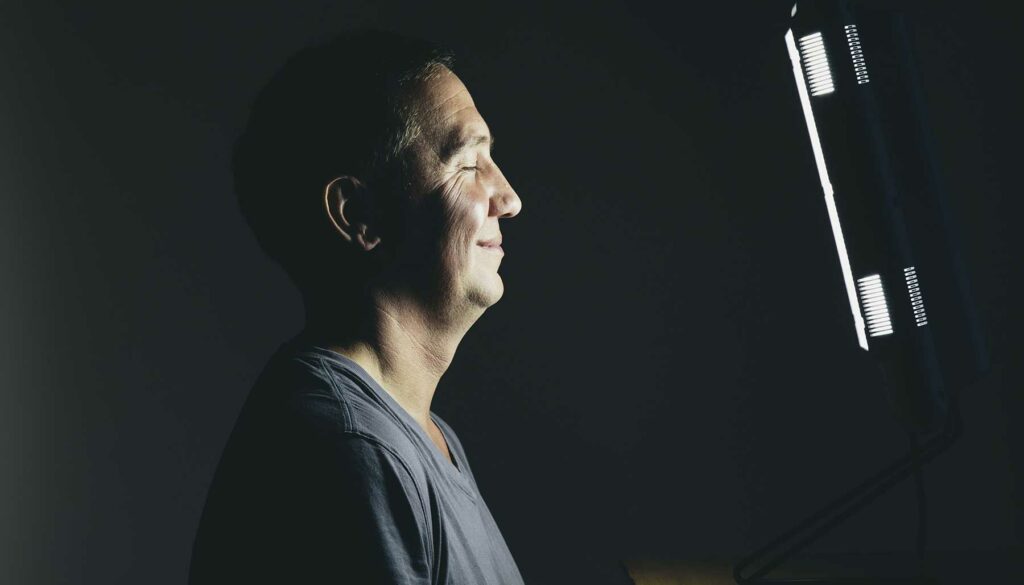It’s that time of year again. Go ahead and say “goodbye” to summer with its long days in the sun. The air is a little crisper, and the sun keeps setting earlier and earlier. Those shorter, cold winter days will be here before you know it.
I am looking forward to all the holidays, of course. They are definitely a bright spot. I love getting together with friends and family, all the food, and the occasional ugly sweater or two. We’ve got yearly traditions to keep up with, and I kind of enjoy decorating with seasonal items. Perhaps I’ll even get the Christmas tree out early this year!

But we also know that those shorter, colder days also bring some less pleasant things too – like seasonal affective disorder, or SAD. While technically a person can experience this condition at any time of the year, it’s pretty rare for it to happen during the summer. Most people who experience SAD can expect it once we start feeling that chill in the air.
It’s easy to pretend like it’s not going to happen. You can’t get me this year, SAD! I’m just going to keep doing what I’m doing like summer isn’t over.
Yeah, that’s not going to work. As much as I hate to admit it, I can’t control it. And hey, you can’t either.
So, let’s get ahead of it this year.
What Is Seasonal Affective Disorder?
Okay, so first things first. Let’s go over what SAD is. If you have ever experienced it, you already know what SAD is. But just in case, let’s do a quick refresher.

Seasonal affective disorder, or SAD for short, is a type of depression that is triggered by the change in seasons. That means that it will occur at the same time each year, rather than lasting all year long, or showing up at different points in your life.
Symptoms are generally the same as other forms of depression. They can include sadness, feeling gloomy, low energy or fatigue, hopelessness, thoughts of death or suicide, social withdrawal, changes in appetite, difficulty sleeping or oversleeping, and loss of interest or pleasure in activities you used to enjoy.
The key, here, is that it doesn’t last through the year. Typically, SAD symptoms start in the fall and continue through the winter months. The symptoms then resolve during the spring and summer. This is why SAD is often dubbed the “winter blues,” but it is a diagnosable condition that you shouldn’t just dismiss.
In rare cases, SAD can happen during warmer months and resolve in fall or winter. There are some summer-onset SAD symptoms that differ. The symptoms may also include trouble sleeping, poor appetite, weight loss, increased irritability, or anxiety.
Like with all forms of depression, it’s important to talk to your doctor about treatment plans. This is especially true if the condition is causing changes to your sleep patterns or appetite, it’s making day-to-day life difficult, or it’s causing you to feel hopeless or cope in unsafe ways.
Treatment can include light therapy, exposure to sunlight, cognitive behavioral therapy, and medications. Self-care and eating healthy, well-balanced meals are also important.
How to Get Ahead of SAD This Year
Now that we’ve gotten that out of the way, let’s talk about some of the ways we can prepare. Your best bet is to get ahead of SAD before it sets in. If you wait until depression has already hit, you’ll end up struggling to find the motivation and it will be much more difficult for you.
Find a Mental Health Provider

Seasonal affective disorder needs to be diagnosed by a mental health professional. If you have been putting off finding a therapist, it’s time to get a handle on it. Do it now, before you’re too deep into SAD and lacking the motivation needed. Finding the correct mental health provider for you might take a few tries, too.
If you are new to it all, check with your primary care doc for therapist recommendations. It’s okay if you don’t like the first suggestion, too. Keep trying until you find someone that feels like a good fit.
And if you already have a mental health provider, there’s no time like the present to get that winter appointment on the books – before their schedule fills up.
Create a Bucket List of Things to Try

Shifting from summer into fall and winter can mean a loss of activities to keep you busy. This is especially true for anyone who really enjoys spending time outdoors. After the warm weather is gone, it’s a lot less fun to have a day in the park with friends, and you definitely won’t be hitting the pool. On top of all that, winter has a severe lack of daylight hours.
Instead of thinking of it as a loss of fun activities, look at it as an opportunity to try new things. Make yourself a bucket list of things you would like to try during the colder months. It doesn’t need to be anything crazy. Learn to play a new instrument, or pick up a second language. Knit scarves for your friends, or pick up some adult coloring books. And hey, since eating healthy is really important for managing SAD, it seems like the perfect time to learn new recipes.
Try Out Some Indoor Workouts

Running and other forms of outdoor exercise can be uncomfortable during the winter. Depending on the climate where you live, it could be downright impossible to keep up with outdoor exercise routines. It’s really unfortunate, too, because exercise can help alleviate symptoms of SAD and other forms of depression.
To prepare for frigid or snowy months, start looking at indoor workout options now. This way, you can find one you like and start getting into the habit ahead of time. Invest in some home gym equipment if that’s your style. Not all home gym equipment needs to consist of big, bulky machines, either. Or, try finding some workout routines that don’t require a lot of space or equipment. Whatever your style, the important thing is to just keep moving.
Purchase a Light Therapy Box

Light therapy, or phototherapy, is often used to treat seasonal affective disorder. Essentially, it consists of exposure to artificial light in an effort to keep your circadian rhythm on track. You don’t have to go anywhere to take advantage of the treatment, either. You can purchase a light box for your home.
These light boxes are made to mimic outdoor light. The light is significantly brighter than your average light bulb, and provides different wavelengths. They are usually best when used within the first hour after you wake up. Make sure you find one that filters out as much UV light as possible, or that produces no UV light at all. Ask your health care provider for recommendations to find a good one.
Prioritize Social Activities

We tend to hang out with friends and family members more often in the summer, so it might seem like your social life evaporates immediately after it gets cold outside. No more weekends at the lake or rooftop hangouts. But in an effort to alleviate SAD symptoms, social activities are crucial for lifting your spirits. It’s easy to get stuck in a lonely rut, which can exacerbate symptoms.
Start to tackle this problem before SAD sets in, while you still have the motivation. Talk to your friends circle about starting weekly or monthly hangouts. You can start a book club, board game nights, or a simple movie night. Whatever works for you and your circle! Just make sure that you put it on the calendar, and you stick to it. Consistency is key if you want to keep it going all winter long.
Plan a Winter Vacation or Staycation

Okay, this one is my favorite suggestion, and not just because I love vacations! Okay, maybe that’s part of it.
Planning yourself a vacation can boost your mood in more ways than one. The excitement and anticipation of planning a vacay will definitely lift your spirits. It’s more than just dreaming of a warm, sandy beach – because you’ll actually get to do it for real!
Taking a vacation to a warmer locale can definitely alleviate symptoms by providing an escape from whatever cold weather and snow you have at home. Even just a short trip to a brighter, warmer place can make you feel a bit better. And just simply changing up your routine can be enough for some people.
If a true vacation just isn’t in the budget, try a staycation instead. You don’t need far-off exotic locations to ease SAD symptoms. Play tourist in your own town or state, taking in the sights at museums or visiting the hottest restaurants. Or, book a room at a local hotel and take advantage of room service (and maybe an indoor pool!). You will still get a break from your routine without spending a lot of extra money.













